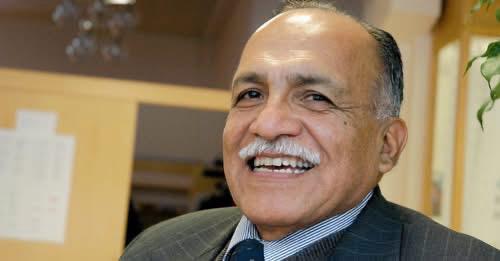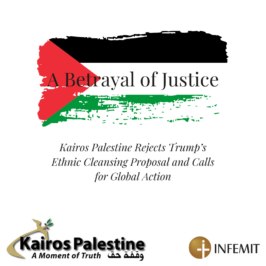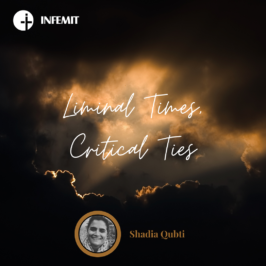Journey, Listening, and Prayer from indigenous voices.
From a very young age, I listened to the stories of missionaries around the world. I remember the story of William Carey and Hudson Taylor. But I did not hear the stories of our indigenous brothers and sisters, much less the Gunadule church. I grew up with this understanding that the Guna church did not have a history, or memory, within the global church. And I wonder if this has changed.
On the other hand, I heard the testimony of an indigenous Wiwa friend, who told me that he decided to follow Jesus when he read, heard, and became passionate about the book of the Acts of the Apostles. He saw the communion of the early church, that shared everything with one another and lived out the common good. But as he visited churches and did not find this, he was disappointed. Because he couldn’t find a church with this perspective.
This, and other memories, pave a way for us to address some reflections about “journey, listening, and prayer from indigenous voices,” as the community of Memoria Indígena.
Following the paths of indigenous memory allows us to understand the living memories of indigenous peoples. The indigenous peoples of Abya Yala (Latin America) have a vast memory of celebration, resistance, lament and insurgency. They have co-inhabited with the Creator Community from an ethic of reciprocity, integrality and complementarity. For example: every time they cultivate the Earth, which we call Mother, because from it we emerge, we eat, we receive fruit, and, when we die, the Gunadule people say we cultivate ourselves within the Earth itself. It is a cycle of interdependence. In this sense, we understand that we live life interdependently with all living beings. We can also examine concretely the time of letting the earth rest, the importance of protecting and sharing native seeds, and also the time of the harvest, in which we share everyone as we also cultivate some seeds for other living creatures.
But our path has also become a path of great consequences when our shoes were filled with stones that have harmed us.
Threats of death, violence, extractivism, impositions, and other ways of life that are alien to the reality of our indigenous peoples, such as systems of consumerism and individualism. We see the repercussions, for example, with the forced displacement of indigenous peoples to cities,
forced exile, and the climate emergency.
However, we have to recognize that the path of indigenous peoples in relation to the colonial church is not new. The indigenous church is old. Before the Latin American church, the indigenous peoples had clashes, disagreements, but also encounters; therefore, their memories – our memories – are a reflection of the goodness of the “Ruah” in the midst of the Abya Yala, even before the invasion. Nor is it a homogeneous community, and the connections and influences of powers determine the various manifestations of indigenous churches.
These fragments have served as anchors for the construction of identities and the resistance of many peoples and churches, as well as the diversity of the continent. These resistances have taken various forms and dynamics that are loaded with historical and current powers that have influenced indigenous churches. We also see this ambiguity in this process of the Christian community, manifesting itself in the relationships between indigenous believers, their church and leadership, their communities, and non-indigenous missionaries, pastors, and churches.
On the one hand, in many indigenous communities, the church has attempted to reproduce the western evangelical Christianity to which they were exposed. When a person visits a community, it is interesting to see that, in many cases, without knowing anything about the place, they can identify with the building that serves as the temple for the congregants. When you talk to church leaders, you often hear a perspective not unlike the churches in the cities or even many white evangelical churches in the United States. This is due to several factors, but principally to the power dynamics among the people who introduce the gospel to the community or what is understood as “gospel” in political and cultural ideologies, (or the people who come later to instruct new believers) and with the traditional ways of teaching and learning. They observed how the mission wanted, or still wants, to introduce, not only the gospel, but also the ways of living and perceiving the world, understanding this as good news. In this last century, in which the communities have accepted the message of the gospel, we can observe the following responses and manifestations of the church, some more common than others:
- those that accept a denomination, but the national denominational leadership has no idea of the indigenous context and insists that the churches reproduce everything as they do;
- churches that are often birthed by indigenous people who emigrated to the cities and then return to their communities – these churches often have influences of city churches, while some create church expressions that are more local-;
- churches that seek to respond to the word and the spirit in an organic way, seeking to create expressions of being the churches that are rooted in scripture and local culture.
Among all these expressions and others, there are some Christians who question: why should we abandon our identities or the traditions of our peoples to follow Jesus? But often they do not voice this question for various reasons; some, for fear of saying the wrong thing and being alienated from their communities.
This raises some reactions among many indigenous communities.
In a Latin American regional consultation (Abya Yala), in which I participated with other indigenous peoples during my time as a university student, these words marked my path toward deconstructing the ways of understanding being the church. The Aymara grandmother stated the following: “The Catholic and Evangelical churches are enemies of our identity because their strength is in eradicating our language, our culture, our faith.” This brings with it another fragmentation, even among Christian indigenous people, since lifestyles of those who embrace faith in Jesus are suspect in their communities. In some contexts, the belief still exists that one stops being indigenous when he or she embrace the faith; and in other, indigenous contexts they are even driven out. Often, the church calls this persecution, but this is a reductionist analysis of the history of indigenous peoples. A deeper analysis allows us to understand that this is a reaction to the proselytism, invasion and colonialism many times exposed by our colonial theologies. Therefore, it is important to recognize that the invasion, genocide, and epistemicide – that is, the ways of imposing knowledge on indigenous peoples – have opened up this this gash of fragmentation, causing new colonialisms, along with the thinking regarding the extirpation of idolatry, syncretism, and even the assimilation of
indigenous peoples, as a way of being able to reject indigenous spiritualities. This, and
many other voices from Memoria Indígena, allow us to engage a self-critique of how we live
our life as a church in relation to indigenous communities and how our practices
do not reflect the path of Jesus. We must weave our way forward with deep listening and some questions:
- How can we transform the traditional structures of theological education in its pedagogy and theology, which seeks to dominate and to not give space for indigenous voices?
- What is the role of the church in reconciliation as it relates to indigenous communities?
- How can we build a community of faith that recognizes diversity in the body of Christ?
- And what concrete steps promote an intercultural church?
These and other questions we ask ourselves to continue on this path of reconciliation. We must change our approach in relation to indigenous churches from: “what can I do for and teach indigenous peoples?” to “what can I learn from them?”
Some brief proposals:
The indigenous church must now shape another path, one that emphasizes the culture, language, experience, essence, and spiritual depth of indigenous brothers and sisters.
Let us leave behind the idea that if our experiences of God and our understandings are
not supported by theological theories (that is, those foreign to our realities) they are not
valid or valuable.
The indigenous church in the midst of all these realities offers us a path of reconciliation between indigenous and non-indigenous communities when it lives its faith, not from a place of fundamentalism, but a place of liberation that recognizes the identity of indigenous peoples.
The theologies of Abya Yala mold a path for rebuilding our teaching and learning in community, without destroying indigenous frameworks, leading us toward a healing that is, for us, reconciliation.
The challenge for Memoria Indígena is how to establish, incorporate and reaffirm these frameworks as vital and valuable in our Christian education systems, understanding that the experience of our God with an indigenous face is an authentic and undeniable contribution to the gospel.
But to speak of reconciliation, we must first understand the conception of evil from the indigenous cosmo-existence. In the Andean Quechua world, evil is the disruption of harmony, be it at the community or cosmic level, which are also interconnected. It is fundamentally communal. It does not have so much to do with the moral weight of the event itself, but with the imbalance of things, which brings negative consequences to the community. For example, killing is bad because it breaks the harmony of the world, not only because of the other’s right to life, but because we understand this cosmic brokenness and fragmentation.
This can help the church recover the idea of social or structural sin.
Also, in order to speak about reconciliation, one must understand the conception of life in abundance or “el buen vivir” – the good life.
Living does not mean the total absence of evil, but that a balance between all things is achieved through reciprocity.
The indigenous peoples of Bolivia have a utopian vision. They long to see the “holy hill” or the “land without evils” where harmony and abundance exist in all relationships. We want a church that reflects and seeks this healthy society. However, we are inhibited from building it when our memories are ignored within the narrative of the global church.
We invite you to pray and walk with the indigenous peoples.
We pray to God that he allow us to recognize God’s action in the world and the movement of Ruah in the indigenous peoples. He created us in his image and likeness.
We pray for an intercultural church that recognizes diversity, plurality, and breaks down the barriers between people, as the letter of Ephesians proposes to us, in which slaves, women, and gentiles are part of the construction of the great dream of the creator to reconcile all the things to himself. In which the indigenous church is a participant in this construction of the great dream of God.
And the letter to the Corinthians clearly tells to us that reconciliation is cosmic – all living beings, including us human beings, are participants in this salvific proposal; participants who recognize ourselves as one in Christ – that is, the entire community of living beings is one in the Creator community. So, we recognize that we cannot be the Church without the indigenous church. Or, as the Gunadule people would say, the canoe accomplishes its purpose only if everyone is rowing. We cannot move forward if someone is missing.






Leave a Reply